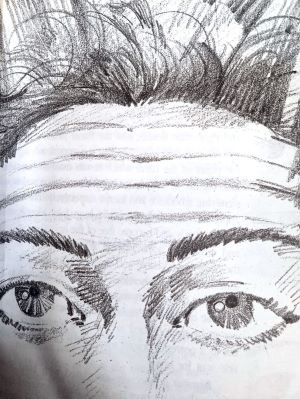
The ash of any burnt object is not regarded as holy ash. Bhasma (the holy ash) is the ash from the homa (sacrificial fire) where special wood along with ghee and other herbs is offered as worship of the lord. Or the deity is worshipped by pouring ash as abhisheka and is then distributed as bhasma. Bhasma is generally applied on the forehead Some apply it on certain parts of the body like the upper arms, chest etc. Some ascetics rub it all over the body. Many consume a pinch of it each time they receive it.
The word bhasma means, “that by which our sins are destroyed and the Lord is remembered” Bha implies bhartsanam (“to destroy’) and sma implies smaranam (“to remember”.) The application of bhasma therefore signifies destruction of the evil and remembrance of the divine. Bhasma is called vibbuti (which means “glory”) as it gives glory to one who applies it and raksha (which means a source of protection) as it protects the wearer from ill health and evil, by purifying him or her.
Homa (offering of oblations into the fire with sacred chants) signifies the offering or surrender of the ego and egocentric desire into the flame of knowledge or a noble and selfless cause. The consequent ash signifies the purity of the mind, which results from such actions. Also the fire of knowledge burns the oblation and wood signifying ignorance and inertia respectively. The ash we apply indicates that we should burn false identification with the body and become free of the limitations of birth and death. The application of ash reminds us that the body is perishable and shall one day be reduced to ashes. We should therefore not get too attached to it. Death can come at any moment and this awareness must increase our drive to make the best use of times. This is not to be misconstrued as a morose reminder of death but as a powerful pointer towards the fact that time and tide wait for none.
Bhasma is specially associated with Lord Shiva who applies it all over His body. Shiva devotees apply bhasma as a tripundra (the form of “=”). When applied with a red spot in the centre, the mark symbolizes Shiv – Shakti (the unity of energy and matter that creates the entire seen and unseen universe).
Ash is what remains when all the wood is burnt away and it does not decay. Similarly, the Lord is the imperishable Truth that remains when the entire creation of innumerable names and forms is dissolved.
Bhasma has medicinal value and is used in many ayurvedic medicines. It absorbs excess moisture from the body and prevents colds and headaches. The Upanishads say that the famous Mrityunjaya mantra should be chanted whilst applying ash on the forehead.
"Tryambakam yajaamabe Sugandhim pushtivardhanam Urvaa rukamiva bhandhanaan Mrytyor muksheeyamaa amrutaat"
“We worship the three-eyed lord Shiva who nourishes and spreads fragrance in our lives. May He free us from the shackles of sorrow, change and death-effortlessly, like the fall of a ripe brinjal from its stem.”
From
"Why do we"- Swamini Vimalananda & Radhika Krishnakumar

